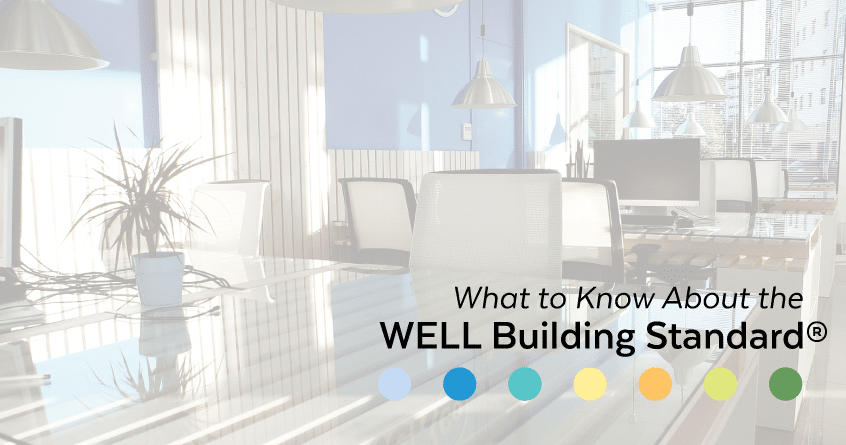The WELL Building Standard® (WELL) is the world’s first standard centered solely on human health and safety. This standard is performance-based and measures, certifies, and monitors all aspects of building environments that impact the human occupants’ health and well-being. This article explains just what WELL entails and why it is so important.
First, A Bit of History About the WELL Building
WELL was developed and launched by global design company Delos in 2013 and is now the benchmark used to attain health and well-being in all types of buildings around the world. This standard is managed and delivered by Delos subsidiary and public-benefit company, International WELL Building Institute (IWBI). The Delos website states:
With over 1.5 billion square feet and over 71 Fortune 500 companies, commercial real estate managers, developers, homebuilders, and hotel operators around the world, the WELL Building Standard® and other WELL programs are making a difference in more than 97 countries.
In addition, the WELL standard is third-party certified by Green Business Certification Incorporated (GBCI), which also administers the Leadership in Energy and Environmental Design (LEED) certification and professional credentialing programs.
The WELL Building Standard® Concentrates on People
Today’s population is becoming known as the “indoor generation.” According to a recent survey conducted by the Velux Group, people generally perceive that they spend 18 percent of their time inside (just over four hours) when in actuality, they spend 90 percent (more than 21 hours) inside. Peter Foldbjerg, an executive with Velux, states:
We know instinctively that spending so many hours in stuffy places isn’t good for us. With the pressures of modern life, we are all now firmly a part of the Indoor Generation, and we need to understand the implications on our health and wellbeing of life indoors, as well as outdoors.
We are a 24/7 society, and this has disconnected us from the natural rhythms of nature—our circadian rhythm, a neurophysiological term for the 24-hour body clock that anticipates and adapts our physiology to the different phases of the day, sleep, and wake cycle. All of this impacts our sleep quality and general health. (1)
Because of the large amount of time people spend indoors these days, standards that lead to built environments that improve occupants’ nutrition, fitness, mood, sleep, comfort, and performance are a no-brainer. According to the WELL Building Standard® Executive Summary:
We believe that the time has come to elevate health and comfort to the forefront of building practices and reinvent buildings that are not only better for the planet but also people.
- This is the first standard of its kind that focuses solely on the health and wellness of building occupants.
- WELL identifies 100 performance metrics, design strategies, and policies that can be implemented by the owners, designers, engineers, contractors, users, and operators of a building.
- WELL is based on a thorough review of the existing research on the effects of spaces on individuals and has been advanced through a thorough scientific and technical review.
- In order to achieve the requirements of the WELL Building Standard, the space must undergo a process that includes an on-site assessment and performance testing by a third party. (2)
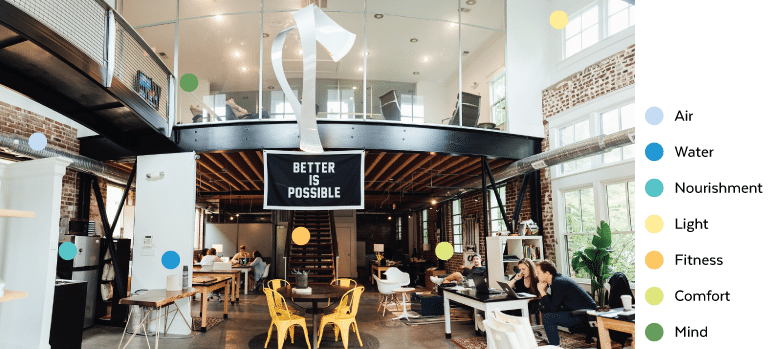 The Seven Concepts of the WELL Building Standard®
The Seven Concepts of the WELL Building Standard®
WELL standards are based on the premise that there is tremendous value in encouraging building environments where people can thrive and offers a certification program based on a set of standards building owners must meet. WELL certification is contingent on a building’s performance around seven core concepts.
1) Air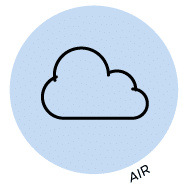
The air concept deals with the overall air quality in a building. It has an established baseline air quality standard, and it examines and monitors a wide variety of factors, including:
- Ventilation
- Air filtration
- Mode and microbe prevention
- Humidity/moisture management
2) Water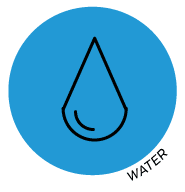
The water concept examines access to and quality of a building’s water supply. It measures factors including:
- Water filtration techniques
- Water testing scheduling
- Removal of contaminants
- Water treatment
- Quality and availability of drinking water
3) Nourishment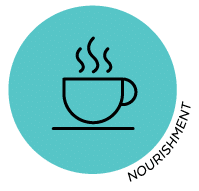
This concept revolves around the availability of proper nutrition and its promotion. Items examined include:
- Availability of fresh, nutritious foods
- Promotion of healthy eating habits
- Contamination safeguards
- Safe food preparation practices
- Overall food environment
4) Light
This concept examines a building’s recognition of the importance of the human body’s circadian rhythm. Light aspects examined include:
- Window design and performance
- Natural light availability
- Light output
- Light color quality
- Night lighting
- Lighting controls
In addition, WELL light certification looks at things like energy consumption, the overall “mood,” and productivity enhancements available.
5) Fitness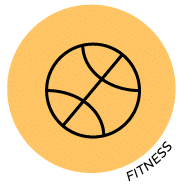
The question here is: Does the facility provide fitness opportunities that maximize physical movement? Areas of focus include:
- Fitness facilities in the building
- Availability of fitness programs
- Injury prevention
6) Comfort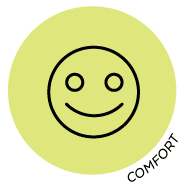
A WELL certification includes a soothing building design that s as free of distractions as possible. Focus is placed on:
- Sound and noise management
- Easy accessibility
- Thermal control
- Low-impact flooring
7) Mind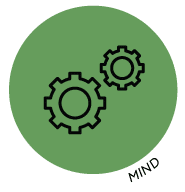
And finally, a WELL certification deals with cognitive and emotional health. Design principles examined include:
- Health and wellness awareness
- Workplace support
- Stress treatment opportunities
- Addiction treatment opportunities
- General aesthetics
- Relaxation spaces
- Stat-of-the-art technology
The WELL Certification Process
Buildings become WELL certified by achieving a defined score on each of the core concepts described above. The certification process includes submitting required building documentation and an onsite audit, which can award a Silver, Gold, or Platinum rating. In addition, there are three types of certifications available:
- New and existing buildings
- New and existing interiors
- Core and shell
This process also requires a recertification every three years.
WELL certification involves the following five steps:
- Registration
- Document submission
- Performance verification
- Certification
- Recertification
Versa Technology is proud to be a supporter of this cutting-edge building methodology. Our PoE switches pair seamlessly with the sophisticated LED lighting solutions many state-of-the-art building developers use to furnish modern, people-oriented inside environments.

